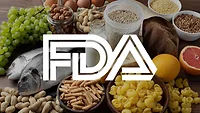Meeting the Allergen Challenge

Allergens are serious business. Food allergies affect an estimated seven to eight million consumers in the United States. Although most food allergies cause relatively mild and minor symptoms, some can cause severe reactions and may even be life-threatening to particularly sensitive individuals. Currently, there is no cure for food allergies. Consumers suffering from these allergies must avoid foods containing the causative allergenic proteins.
Thus, when a food safety issue due to mishandling of allergen-sensitive ingredients occurs, the entire food processing industry suffers. Consumers rely on food companies to provide safe products. Consumers who must be mindful of the foods they eat because of potential allergic reactions are especially dependent on the industry’s ability to identify, process and market foods that are labeled correctly.
Food manufacturers play two key roles in assisting consumers in avoiding allergenic foods. It is important to have proper food labeling and ensure that foods do not become contaminated with allergenic ingredients due to inadequate cleaning or by cross-contact with allergenic foods that are not declared on a product’s label.
In the United States, the “Big Eight” allergens (wheat, crustacean shellfish, eggs, fish, peanuts, milk, tree nuts and soybeans) account for 90 percent of all food allergy reactions. In 2006, the U.S. Food and Drug Administration implemented the Food Allergen Labeling and Consumer Protection Act;, since that time, allergens have triggered more recalls than any other source.
Because of the importance of allergen issues, the Food Safety Modernization Act updated requirements for the current Good Manufacturing Practices (GMPs). The rule revised the long-standing GMP requirements, including actions to ensure the protection of allergen cross-contact during manufacturing and employee training.
So what can food and beverage processors do about the allergen challenge? Here are some steps you can implement to mitigate the risk of allergen contamination:
• Put together an allergen control team in your company to focus on the issue. Include representatives from all appropriate departments including, but not be limited to manufacturing, quality, labeling/regulatory compliance, research and development, engineering, sanitation and food safety. If your organization does not have all of these functions, select a cross-section of expertise as appropriate to your operation.
• Conduct a risk assessment to determine the choice of specific allergen management procedures.
• Develop an “allergen map”—essentially an allergen process flow diagram to understand where allergenic ingredients and foods exist in the plant and where they are introduced into the process.
• Develop an allergen control plan specific to each processing facility.
• Review the allergen control plan regularly and update when necessary—especially when new ingredients are added, when processes or protocols are changed or when new products or equipment are introduced into the plant.
An allergen control plan is key in any defense against cross contamination of allergens. An effective plan requires keeping allergenic foods and ingredients separate from all other products and ingredients from the time they enter your facility until they are introduced into the production line and beyond. Every attempt must be made to visibly identify allergens and isolate them—at every step—from other foods, ingredients and equipment.
What comes into your facility from your suppliers has an equally important impact on the quality and integrity of your food processing protocols—and ultimately your legal exposure as well. Your allergen control plan should outline expectations, documentation and validation to ensure your suppliers are diligent and committed to controlling and managing allergens.
To assist in the process of developing or revising an allergen control plan, the OpX Leadership Network,[1] has developed the Checklist: Allergen Cleaning Validation.[2]
This checklist outlines many of the tasks to be accomplished when implementing an allergen control plan and provides a record-keeping framework that can be used to ensure all steps are followed. Consumer packaged goods companies and original equipment manufacturers alike can use this document as a template for organizing and developing validated allergen cleaning procedure.
Maria Ferrante is senior director, marketing and communications at the Association for Packaging and Processing Technologies.
References
1. www.opxleadershipnetwork.org/.
2. www.opxleadershipnetwork.org/food-safety-plan-validation/download/allergen-cleaning-validation-checklist.
Looking for quick answers on food safety topics?
Try Ask FSM, our new smart AI search tool.
Ask FSM →







